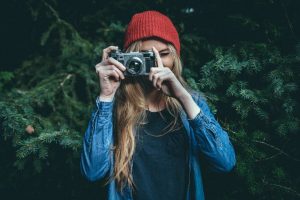- This topic is empty.
-
AuthorPosts
-
14/07/2025 at 14:01 #82897
When it comes to fine art photography, lighting is not merely a technical consideration; it is the very essence that breathes life into a composition. The interplay of light and shadow can dramatically alter the perception of a subject, transforming a simple image into a captivating work of art. In this post, we will explore the best lighting techniques for fine art photography, delving into various sources, qualities, and setups that can elevate your artistic vision.
Understanding the Role of Light in Fine Art Photography
Light serves as the primary medium through which we perceive and interpret visual art. In fine art photography, the goal is often to evoke emotion, convey a narrative, or highlight the intricacies of a subject. To achieve this, photographers must understand the characteristics of light, including its direction, intensity, color temperature, and quality.
1. Direction of Light: The angle at which light hits a subject can create different moods and textures. For instance, side lighting can enhance the three-dimensionality of a subject, while backlighting can produce silhouettes that emphasize form. Experimenting with various angles can lead to unique interpretations of the same subject.
2. Quality of Light: The quality of light refers to its softness or hardness. Soft light, often achieved through diffusers or natural light on overcast days, minimizes harsh shadows and creates a gentle, flattering effect. Conversely, hard light, typically produced by direct sunlight or unfiltered artificial sources, can create dramatic contrasts and sharp shadows, adding intensity to the image.
3. Color Temperature: The color of light can significantly influence the mood of a photograph. Warmer tones (around 3000K) can evoke feelings of comfort and nostalgia, while cooler tones (above 6000K) can impart a sense of calmness or detachment. Understanding how to manipulate color temperature through filters or post-processing can enhance the emotional impact of your work.
Natural vs. Artificial Lighting
Both natural and artificial lighting have their merits in fine art photography, and the choice often depends on the desired outcome.
– Natural Light: Utilizing natural light can yield stunning results, especially during the golden hour—shortly after sunrise or before sunset—when the light is soft and warm. Photographers can take advantage of window light for indoor shoots, which can create a beautiful, diffused effect. However, natural light can be unpredictable, requiring photographers to be adaptable and ready to seize fleeting moments.
– Artificial Light: Studio lighting offers greater control over the environment. Using continuous lights or strobes allows photographers to manipulate intensity and direction precisely. Softboxes, umbrellas, and reflectors can soften harsh light and create a more flattering illumination. Additionally, colored gels can be employed to introduce creative color casts, further enhancing the artistic expression.
Advanced Lighting Techniques
To truly master fine art photography, photographers should consider employing advanced lighting techniques that can add depth and dimension to their work.
1. High-Key and Low-Key Lighting: High-key lighting involves bright, even illumination that minimizes shadows, creating a light and airy feel. This technique is often used in fashion and product photography. In contrast, low-key lighting emphasizes shadows and contrasts, resulting in a moody, dramatic atmosphere. Both techniques can be powerful tools for storytelling in fine art photography.
2. Light Painting: This creative technique involves using a handheld light source to illuminate a subject during a long exposure. Light painting can add an ethereal quality to photographs, allowing artists to create unique effects that are impossible to achieve with traditional lighting methods.
3. Using Reflectors and Flags: Reflectors can bounce light back onto a subject, filling in shadows and creating a more balanced exposure. Conversely, flags can block unwanted light, allowing for greater control over the lighting setup. Mastering these tools can significantly enhance the quality of your images.
Conclusion: The Art of Lighting in Fine Art Photography
In conclusion, the best lighting for fine art photography is not a one-size-fits-all solution; it is a nuanced interplay of various factors that can be tailored to suit individual artistic visions. By understanding the characteristics of light, experimenting with different sources, and employing advanced techniques, photographers can create compelling images that resonate with viewers on a deeper level. Ultimately, the journey of mastering lighting is an ongoing exploration that can lead to the creation of truly breathtaking works of art.
-
AuthorPosts
- You must be logged in to reply to this topic.


